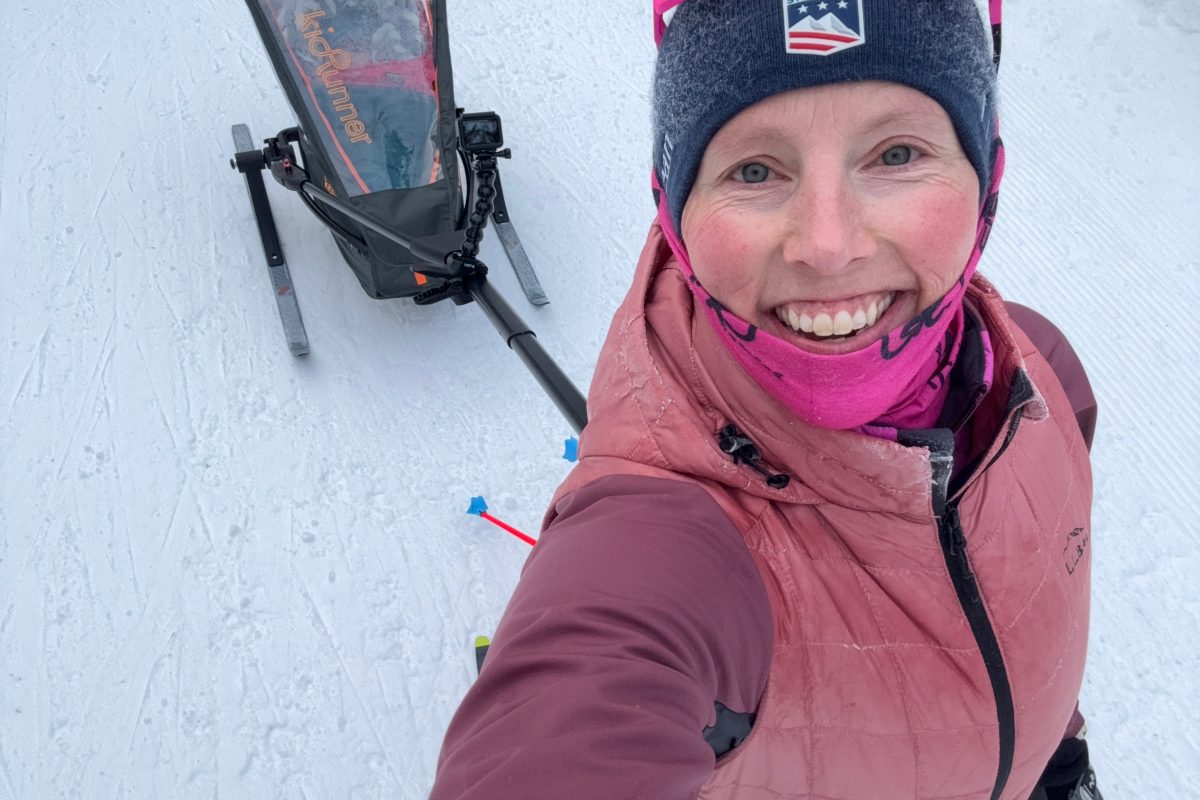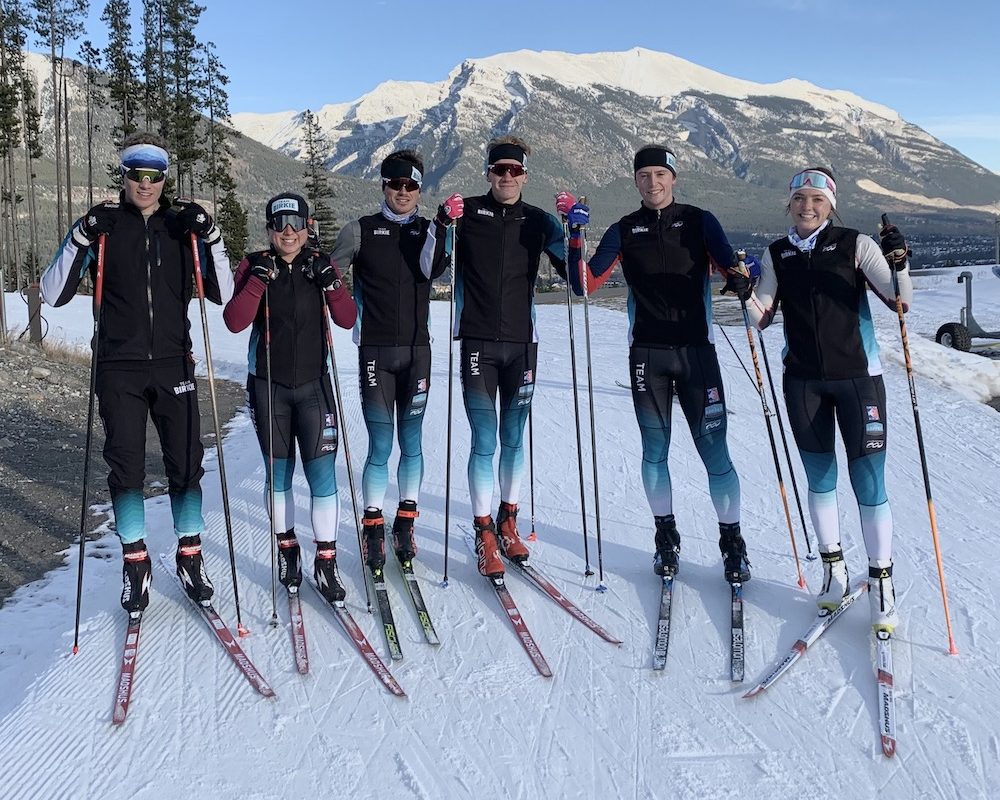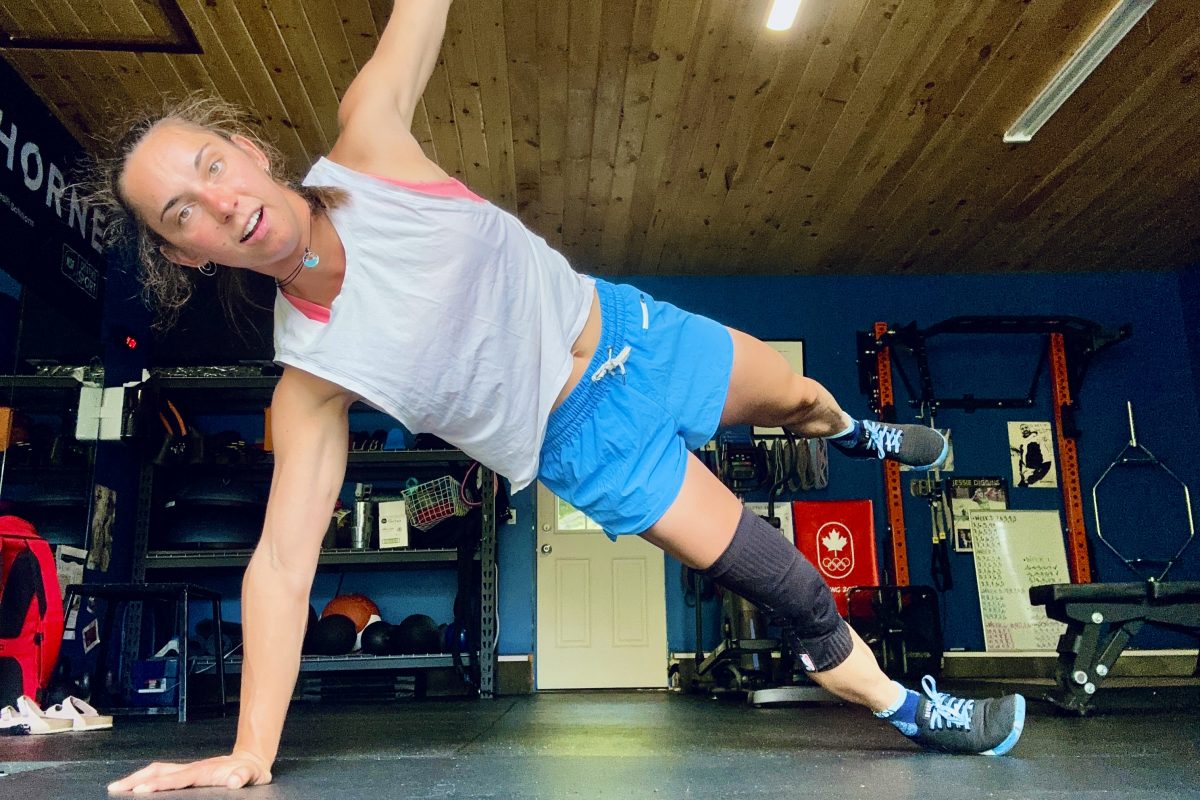This is part three in the “Road to Recovery' series. It has been many
weeks since part two, and for that I apologize. But in a way, this is good news
for me. After all, the fact that I have been too busy skiing to sit down and
write part three means that my fractured collarbone must be healing well. That
is true, but I am getting ahead of myself. Lets back up a bit…
When I last left off, it was early November and I had just finished a mentally
and physically painful month essentially living on the couch. It was too painful
to sleep in bed, and I wasn't supposed to leave the house except for very easy
walks. Thinking back to November 3, I wrote this:
November 3
I'll be honest – I was in no hurry for the snow to arrive. If there was snow
on the ground and I wasn't allowed to go skiing, it just might kill me. Everyone
else out skiing while I sit at home? I went into a fury just thinking about
it. I felt I was beginning to come around. My ability to get up and out of
the house was brightening my spirits. I was becoming encouraged by my progress.
But if it snowed, I could no longer go outside and walk the trails. I would
be driven back inside until I was given the okay to ski. So while everyone
else fretted about when winter would start, I could say that for the first
time in my life, I was in no hurry for the snow to fall.
That next weekend, my friend Scott called me up. He was heading up to Hatcher
Pass (an hour from Anchorage) to do some skiing. There was about 3k of groomed
trails there and he wanted to know if I wanted to come along. I knew I wasn't
supposed to ski, but I also knew that I desperately needed to leave the house.
I was going insane just lying there staring at the ceiling. I decided that just
taking a drive up into the mountains would do me good. So I told Scott that
I would love to go along with him, but I wasn't going to ski. So he swung by
and picked me up. As I was getting ready to go – marching around the house trying
to find all my winter clothes that had been stored for months – Linda remarked
that it was the first time in over a month that I moved with a sense of purpose.
And indeed, I did feel like life was rushing back into my body as I searched
for my gear. The thought of snow had awakened my spirit from its slumber and
was I was now readying myself to tackle the road back to full health. So I gathered
up my jacket, hat, gloves, and boots and headed off to the mountains. And I
just happened to throw my skis in the car too…you know, just in case.
Okay, I admit it. I wasn't just going for a ride into the mountains, I was
going to ski. I told myself that I was only going to ski if conditions were
good and the terrain was mellow. But in the back of my mind, I knew that if
I put the skis in the car they were going to get used.
Truth be told, I had been planning my re-introduction to skiing since the moment
I heard my bone snap into pieces. I knew I wasn't going to hit the trail at
25 kilometers per hour and be instantly back in form. I knew I would have to
be cautious and take it easy. Especially because I also knew I was going to
be on my skis long before my doctor gave me permission. I decided that today
was as good a day as any to start the plan. I used my wide, stable, metal-edged
backcountry skis, with my heavy, sturdy backcountry boots. And I put on my climbing
skins as well. Even though I was going to be skiing on groomed trails, I figured
that this set-up would slow me down enough that I wouldn't hurt myself. I could
shuffle along with one pole, and it would be just as safe as the walking I had
been doing. I had a great time, shuffling along at about 8 km an hour. I skied
for an hour and forty minutes.
The following week, we received our first major snowfall in town at about the
same time that I went back to see my doctor for a one-month check-up. The trails
were now skiable and now I was hopeful that the doctor would give me the green
light. He said that the X-rays looked good and the bone was healing fine, but
that I shouldn't ski for another month. I did not tell him I had already been
skiing once. Instead, I immediately started searching for a loop-hole. I asked,
“Can I walk vigorously?”
“Yes.”
“Can I snowshoe?” Yes, if I was careful.
I followed my line of questioning to the all-important final question: “So
basically I can do any activity where I won't fall on it?”
“Yes.”
In my mind, this meant that I could ski, as long as I didn't fall. Linda, being
the voice of reason, completely disagreed, but she also knew that she wasn't
going to change my mind.
Training Begins
For the next few weeks, I shuffled around the trails of Anchorage on my touring
skis and skins. I would push the pace a bit on the uphills, but I was very cautious
on the downhills. And most importantly, I didn't fall. My shoulder honestly
felt better after skiing than it did at any other time. Just before Thanksgiving,
about 6 weeks after the accident, I made the next step in my rehabilitation.
I began skate skiing without poles. At first I stuck to the very easy trails
and went slow. Once I had my ski legs under me, I began to pick up the pace
on the uphills, but still kept it very slow on the downhills.
By the time I went back to the doctor for my two month check-up, I was skiing
5 days a week for between an hour and two hours, all without poles. My legs
felt like they were really getting back in shape and more importantly, my shoulder
felt great.
The doctor asked, “So you are wondering when you can start skiing, aren't
you?”
At this point, I admitted to him that I had already been skiing “a couple
of times.”
I told him that I was skiing without poles, going slow, etc. He smiled, said
that was probably fine and that I should continue doing that for two more weeks,
then I could use poles.
A week later I started using poles. Again, I eased into it – no strenuous double-poling.
By New Years, I was skiing up a storm. My arms still felt weak, but I felt 'normal'
when I was skiing and that was huge progress.
Finally A Race
On January 11, I entered my first race of the year, a 30K classic in Anchorage.
I had no expectations for my performance, I figured that if I finished in one
piece it would be a success. I started conservatively, hoping that if I was
back in the pack my racing instincts could be kept at bay and I could enjoy
my ski. But then a funny thing happened. I was skiing along – a bit faster than
I planned on, but not too much faster – and I realized that I was in fourth
place. Wow, not too bad for a guy with a busted wing. I did my best to play
it safe and not 'race' too much. I worked hard, but I didn't kill myself. In
the end I got outsprinted for fourth, so I came in fifth. It was much, much
better than I had hoped for. And it was a lot of fun. More fun than I have had
in a race in years.
Over the next two months, I entered four more races including a
50 km wilderness race. In each one, I felt better and better. As I stated
in the first article, my goal for the year was the Tour Of Anchorage. Before
my injury I wanted to be able to ski the whole race in the lead pack, maybe
even have a shot at winning. In the dark days on my couch in October and November,
I thought that goal had become impossible. But on March 7, as I stood on the
start line for the Tour, I felt good about how far I had come and I was going
to give it a try. I was going to stick with the leaders.
Tour Of Anchorage
The Tour of Anchorage course goes like this: very hard climbs for the first
10K, then downhill for 5K, then fairly flat for a long 35K before a 3K climb
to the finish. I felt pretty good for the first few K's. As we climbed up the
hills of the Spencer Loop, one by one the skiers began to drop off the lead
pack. Eventually it was whittled to six. Erik Flora was setting the pace, followed
by Nathan Schultz, Tobias Schwoerer, Jurai Brugos, Scott McArt and myself. I
was definitely working harder than any of them, but I kept thinking “Just
make it to the top of the Spencer Loop then you have a free ride all the way
to Westchester Lagoon (about 35 K into the race).” When we crested the
last hill on the Spencer Loop, I felt like I had just won the tour. I was so
proud. My goal had been to ski most of the race with the leaders and now, with
lots of downhills and drafting to come, it was merely a formality to do so.
I should have known better. Never assume you know what will happen over the
next 25K, or even the next 1 K for that matter. As soon as we all dropped into
our tucks, it all started going wrong. As I prepared to rest, breathe, and recover
from my effort on the uphills, I noticed that the gap between me and Scott was
increasing rapidly. They were all gliding away from me! I jumped out of the
tracks and free skated, trying desperately to hang on, but it was no use. It
was a very long downhill and by the time we reached the bottom they were out
of sight. This was awful. Now I was by myself, with no one to draft behind,
exhausted from my efforts on the uphills, and I had slow skis. It was going
to be a long 40 K to the finish.
I kept fighting, and when James Southam caught up to me, I skied most of the
rest of the race with him. Only one other person passed us and I had just enough
left to get past James right before the finish line. I finished 7th.
I was disappointed that I couldn't stay with the leaders. I think I had the
fitness to do it, but I made a poor ski choice. I used a pair with too much
structure for the cold conditions and they were slow.
But in the bigger picture, I had made a successful recovery from a potentially
season-ending injury. Maybe it wasn't exactly what the doctor recommended, and it certainly wasn't nearly as aggressive as I would have liked. But I think it was a good compromise. I pushed my limits a little bit when I thought I could, and held back when I thought I should. I wouldn't necessarily recommend it for others, but it worked for me. I made it through the healing process and now I feel good as new. Which means that now I can look forward to training for next season…



